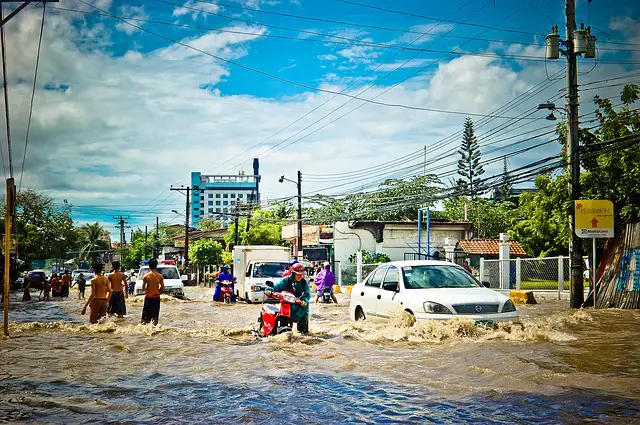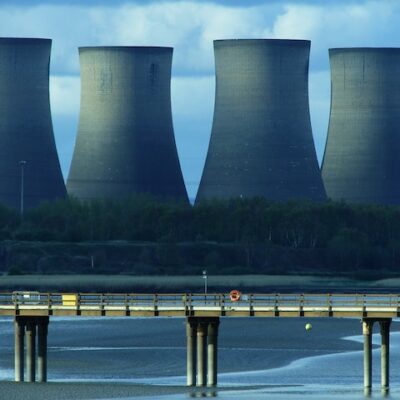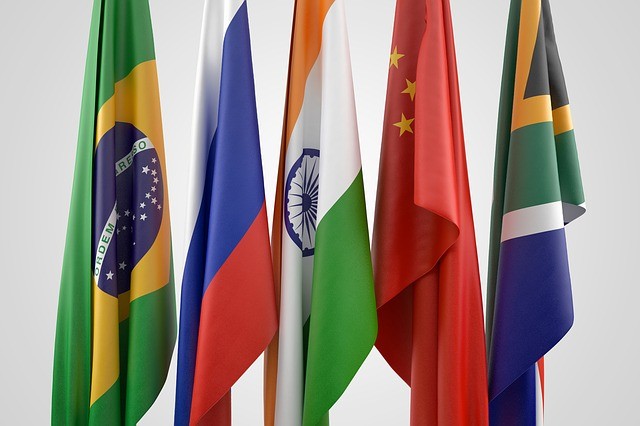Theme:-
- The recent monsoon floods in Karnataka, Kerala, Maharashtra, Gujarat & Andhra Pradesh took more than than 200 lives and displaced more than 10 lakh people. Floods and droughts have become a common phenomenon in India due to several factors such as climate change and deforestation. So, there is a need to ask ourselves whether India is really prepared to deal with natural disasters.
What is a disaster:-
- A disaster is a sudden event that affects the functioning of the society and results in human, economic and environmental loss.
- Disasters are of two types –
- Natural Disasters (Ex- Floods, Droughts, Earthquakes)
- Man-made disasters (Ex – Nuclear power accidents, water crisis)
- Even though we do not have control over natural disasters, human actions are increasing the frequency and severity of natural disasters. For example, deforestation, the encroachment of rivers and many other human mistakes contributed to climate change. And climate change is making natural disasters even worse.
The need for disaster management:-
- Effective disaster management strategies can prevent loss of lives and also economic loss. For example, we can divert excess water to water-deficient states to prevent floods. And we can build disaster-resistant buildings to prevent economic loss during earthquakes and cyclones.
How can we deal with disasters:-
- The complete disaster management cycle consists of 4 stages – Mitigation, Preparation, Response & Recovery
- Mitigation – Disaster mitigation measures prevent or reduce the negative impact of disasters. For example, seawalls are built to protect coastal areas from tsunamis.
- Preparation – Disaster preparedness helps people in preparing to deal with disasters. For example, conducting mock-drills, training people on protecting themselves and others in times of disaster.
- Response – Disaster response refers to immediate assistance in times of disasters. Moving people to safe areas, providing shelter and food to the affected people comes under disaster response.
- Recovery – Restoring the affected areas, rebuilding the livelihoods comes under disaster recovery measures.
- Not just disaster management, but disaster prevention is also equally important. Disaster prevention measures will avoid the occurrence of disasters. For example, avoiding construction works in ecologically sensitive areas will prevent landslides and floods.
The situation of disaster management in India:-
- India is highly vulnerable to floods, droughts, cyclones, earthquakes and landslides. About 70% of India’s coastal area is prone to cyclones and tsunamis, and 12% of its land is prone to floods, and 60% of the land to earthquakes.
- ‘National Disaster Management Authority‘ (NDMA) was formed in 2006 under ‘The Disaster Management Act’, 2005. NDMA takes care of the disaster management in India using ‘National Disaster Response Force‘, ‘National Disaster Response Fund‘ & ‘State Disaster Response Fund‘.
- Disaster response has improved a lot in India. For example, Super Cyclone in 1999 killed more than 10,000 people in Odisha, whereas Cyclone Phailin in 2013 took less than 40 lives. Odisha government has successfully evacuated nearly 7 lakh people to prevent the loss of lives. And recently in 2019 Odisha has faced Cyclone Fani, which was the strongest cyclone to hit India in 20 years. During this time 10 lakh people were evacuated in advance. With this incident, The United Nations Office for Disaster Risk Reduction (UNISDR) has praised India for minimising loss of lives.
- If we observe the recent floods which affected Karnataka, Kerala, Maharashtra, Gujarat & Andhra Pradesh, the Navy has rescued more than 14,000 people.
- At the G20 summit, 2017 Indian Prime Minister Narendra Modi has proposed to set up ‘Coalition for Disaster Resilient Infrastructure (CDRI)‘ to share the capacity building measures and technical know-how among countries to effectively tackle disasters.
What more needs to be done:-
- Disaster prevention measures are not up to the mark in India. Deforestation, improper land use, rapid urbanization without proper planning is increasing the vulnerability of India to disasters. In 2011, ‘Madhav Gadgil-led Western Ghats Ecology Expert Panel‘ suggested dividing the Western Ghats into 3 zones, and the one zone among them, which consists of 64% of the Western Ghats should be declared as an ecologically sensitive area. The panel suggested restricting mining and other development activities in this ecologically sensitive area. But this report was not followed by the government. If this report was followed, the recent floods wouldn’t be this severe. Not just in western Ghats, but in several areas, environmental assessment reports are being neglected and as a result, we are failed at stopping preventable disasters. There is a need to put the environment before the development, otherwise, the negative consequences will set back the already achieved development.
- There is a need to conduct widespread awareness programs on protecting themselves in times of disasters. This will help in saving many lives without depending much on disaster response force.
- In India, funds for disaster management are not sufficient at all. To solve this, setting up ‘National disaster insurance policy’ helps to a great extent. If the government pays the premium from disaster fund, insurance companies will ensure that the infrastructure is disaster-resistant. Shifting responsibility from the government to insurance companies will be very effective in mitigating the impact of disasters. Moreover, with this step affected people will be paid immediately and by that, they can rebuild their lives in a short time. At present, waiting for government assistance in restoring the communities are taking a much longer time.
- As more and more people are migrating to urban areas, population density is increasing at a rapid rate in those areas. Increased population density can result in more damage in case of disasters. So, there is a need to concentrate more on planned urbanization.
Best practices worldwide:-
- Japan is the world’s safest and most disaster-resilient country. Japan is vulnerable to recurrent killer earthquakes, tsunamis and typhoons. With planned urbanisation and disaster resilient infrastructure, it is effecting tackling natural disasters.
Conclusion:-
India has improved a lot in disaster response. But there is a need to put more efforts into disaster mitigation and recovery. Effective disaster management strategies will not only prevent loss of lives but also helps affected people in rebuilding their lives in the shortest possible time.
Image by J Lloa from Pixabay
Your Turn…
What are your thoughts on this topic? Express your views through the comment section below. And subscribe to our blog to read answers to the trending GD topics.
Copyright @ Group Discussion Ideas.
This article contains ideas borrowed from:
- Sreeram Chaulia (2019), Global collaboration will improve India’s mitigation initiatives, LiveMint.
- Cycle of extremes: On droughts and floods (2019), The Hindu.
- Disaster alleviation needs its Ayushman (2019), LiveMint.
- G. Satish Raju. (2018). Global lessons from natural calamities, LiveMint.
- Vinod Thomas. (2018). Rethinking disaster management, The Hindu.
- Feroze Varun Gandhi. (2018). For a shift in gear: on managing natural disasters, The Hindu.






